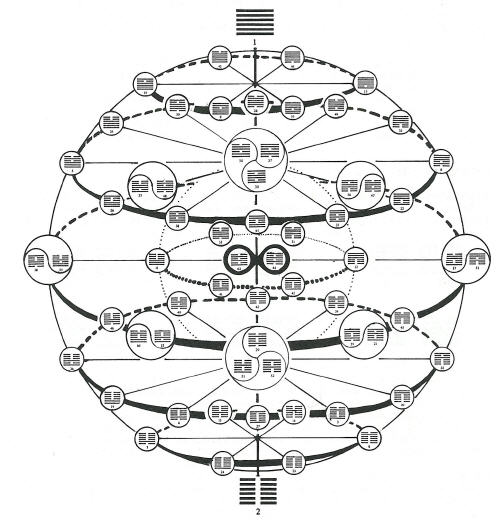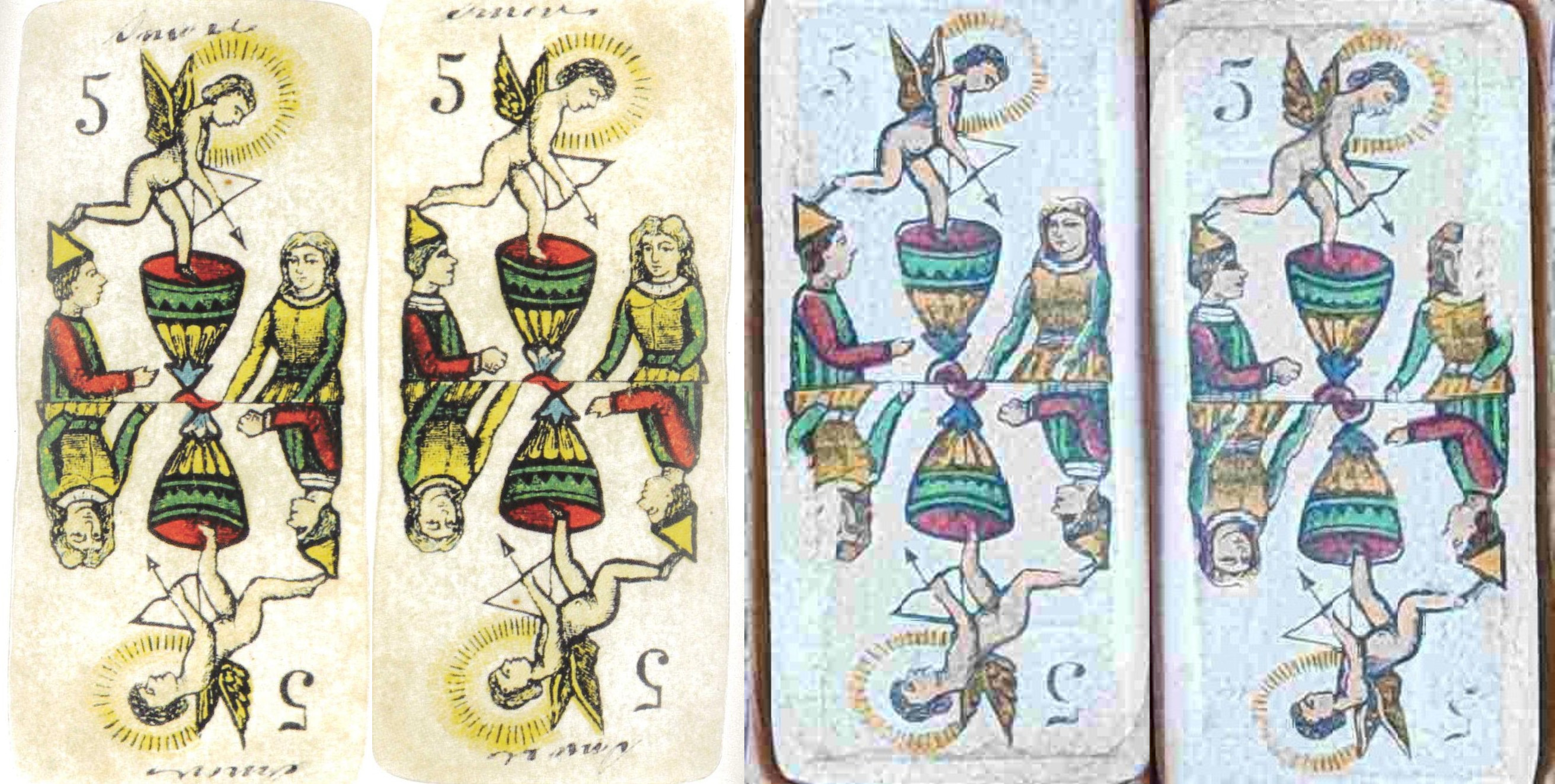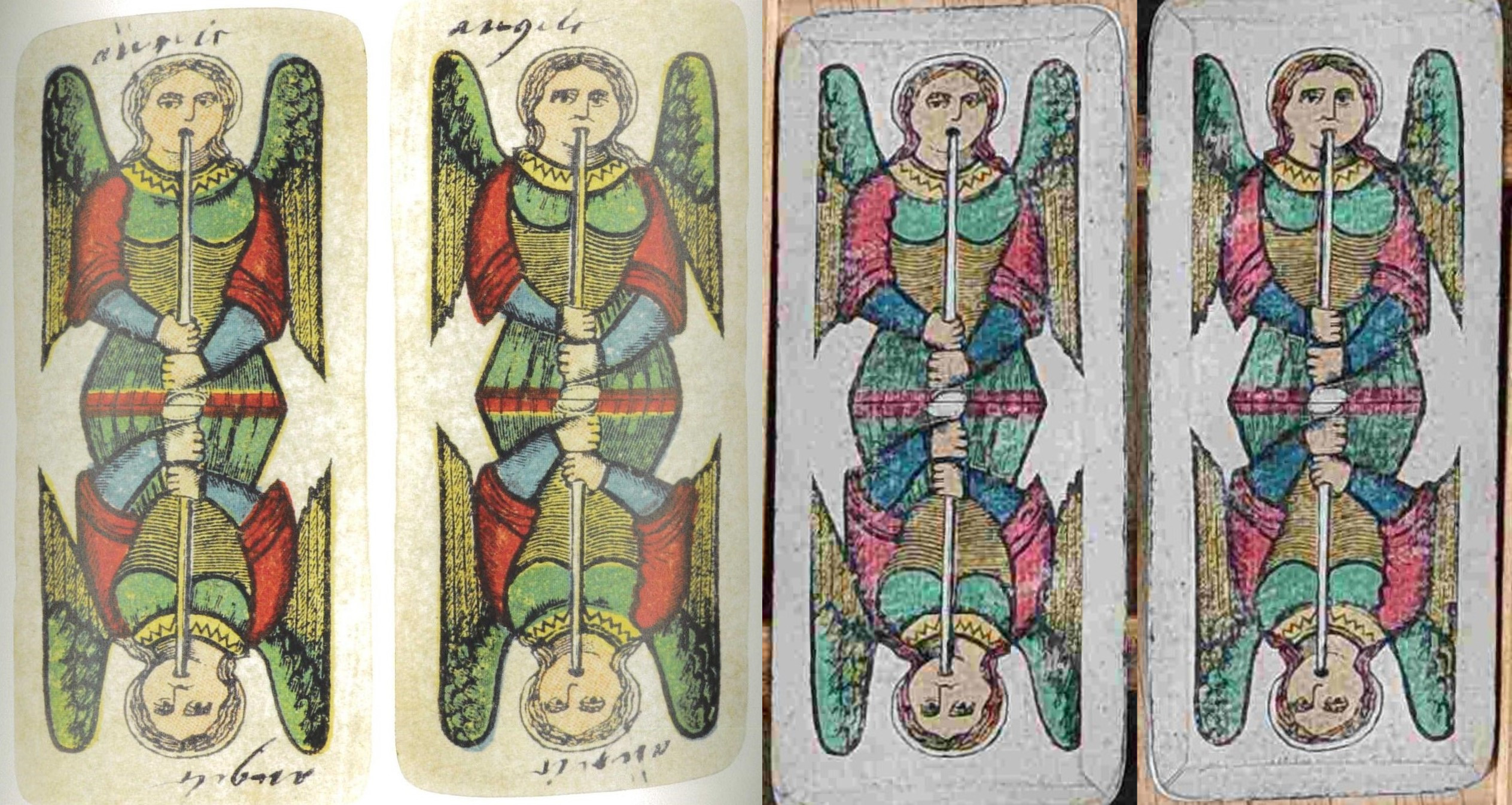I'm in Umbria but been living in Rome for the last 18 years, and going there quite often.Huck wrote: 12 May 2023, 09:37 The command ...
site:a.trionfi.eu/WWPCM murari bari
... at your browser address line ...
... will guide you to material about Murari in Bari, which is in the archive of the WWW playing card museum ....
... but I think, no Tarocchi decks. Where are you in Italy, if I may ask you that? And what are your interests in the field of Tarot History?
I'm an africanist archaeologist, so no direct connections to Tarot History, but I've always been fascinated by symbolism, been painting Tarots for a while, been reading I-Ching for my whole life and my sister is a very good Tarot reader.
Some months ago I got interested in Tarots again, after many years, and I went looking for my old deck (the Oswald Wirth one): and some days later I stumbled on this Murari deck. It totally fascinated me, being so different from the usual Tarots. And so I started doing some research.
At first I hoped to find the two missing cards, but then I came to realize how difficult it would be, given the quite rare nature of this specific deck.
Now I'm hooked, and have to know everything about these Tarots!









